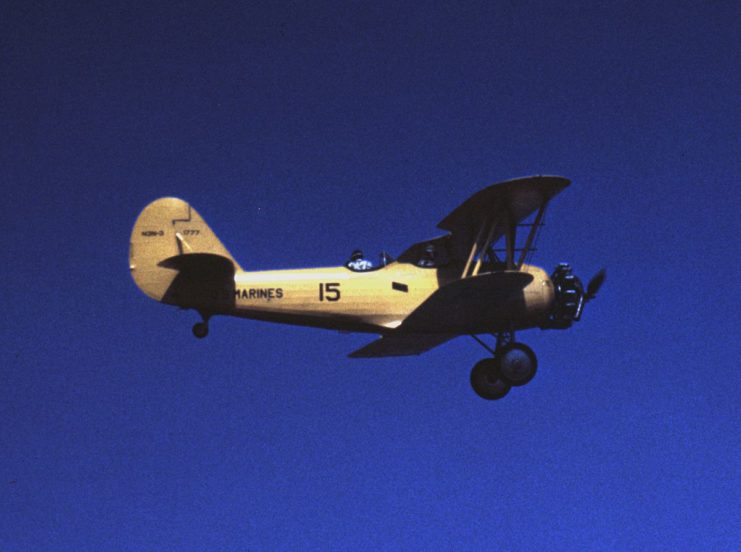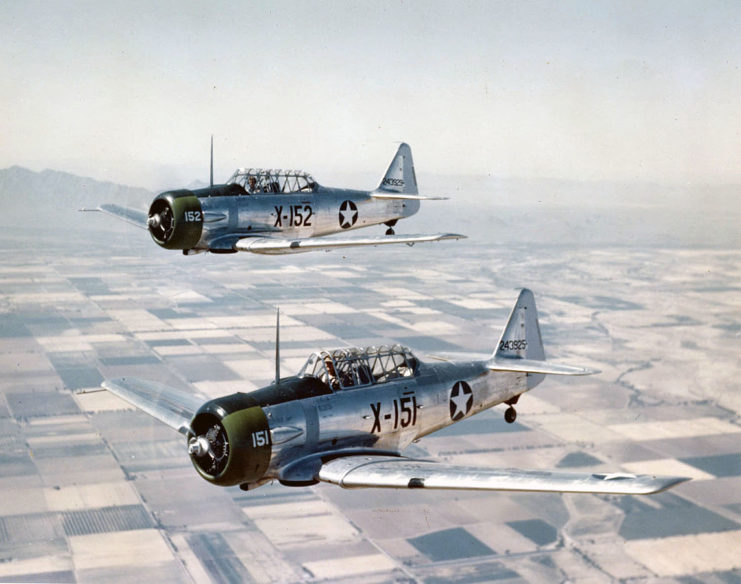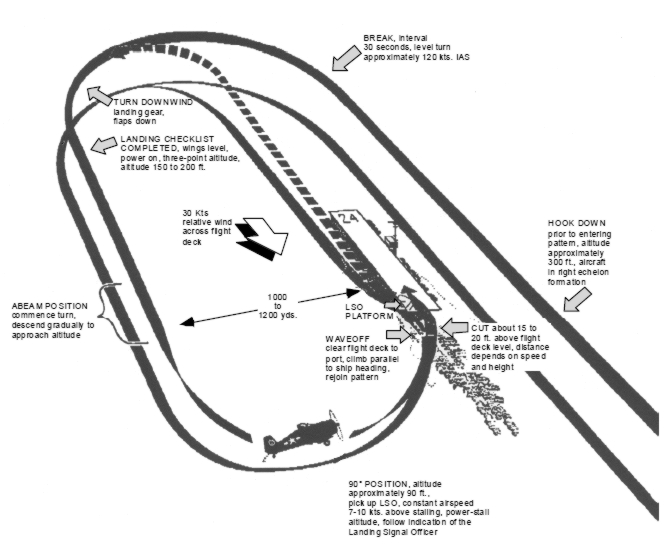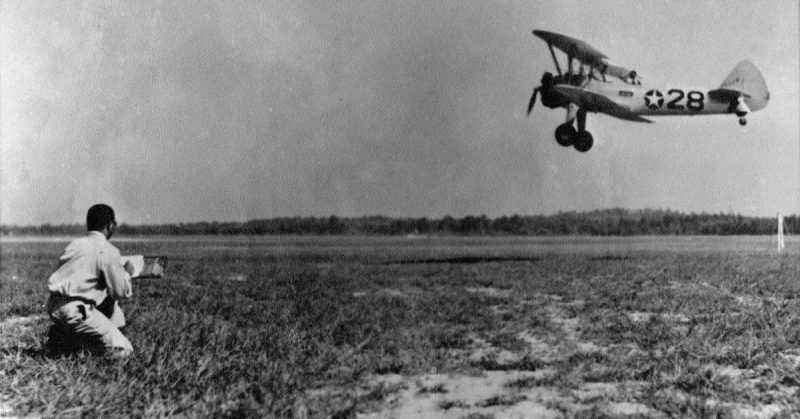With a thud and a screech, a damaged fighter plane hits the deck of an aircraft carrier. The ocean heaves in a high wind, making the ship unstable. The wind buffets the plane as the pilot fights to bring it to a halt. One small lapse of judgment and he could crash or go plummeting off into the sea. Meanwhile, all around, explosions fill the air with noise and danger.
Such was the life of a pilot in the US Navy during WWII. How did the Navy go about preparing men for such a dangerous high-stakes job?
Selection
The first step in preparing pilots was to pick the best men for the job.
During the late 1930s, the Navy shifted from producing a small number of superb pilots to producing a larger number of excellent ones. Even with the slight slackening in the demands placed on Navy pilots, the bar for entry was kept high. All potential pilots had to complete at least two years of college, to prove their intelligence and provide them with a decent level of education. They had to be between 18 and 26 years old, ensuring young, healthy candidates with a long career potential. They also had to be unmarried.
Recruiters kept on the alert for such men. Vernon Micheel, who served on aircraft carriers in the Pacific, was directed to the air corps by a Navy recruiter who noticed his college degree.
If they passed the necessary physical tests needed for service, the recruits then moved on to initial training.
Basic Flight Training
Training usually began with learning to fly an N3N Canary, also known as a “yellow peril.” The biplane was made in the Navy’s aircraft factory and was used mainly as a training machine.
Basic flight training was the stage with the highest drop-out rate. It sifted out men who struggled with flying at all, never mind in the difficult circumstances of combat and aircraft carrier landings.
If they got through the basic training, pilots moved on to the intermediate and advanced stages.

Flight Training – On the Ground
A lot of theoretical knowledge was needed before a pilot could undertake the practicalities of combat flying. It was classroom based, and much of it was rooted in maths and science. There, the trainees’ college degrees became important.
Some of the learning was broad: covering the science of aerodynamics and how to think in three dimensions. Some of it was more directly practical: the capabilities of the planes; angles of attack; the best positions from which to kill an enemy aircraft; and how to pull out of an impending crash.
Flight Training – In the Air
Alongside the classroom learning, pilots gained experience in the air. 69 flight hours were expected during basic training. Then another 28 in intermediate training – 18 hours after they had been assigned to a type of plane.
A lot of these flights took place in training planes such as the N3N and the T-6 Texan. Obsolete combat aircraft were also used, providing an experience closer to the real thing while not using up planes that were needed.
At the advanced level, flight training included formation flying and gunnery.

Specialist Training
During their training, pilots applied for the specialty they preferred. Fighter pilots had the most exciting roles, due in part to the reputation ace pilots had gained during WWI. It was the path many pilots headed down.
Others, by either choice or default, went into other specialties, such as flying the SBD Dauntless, a scout and dive bomber.
At that stage, they often got to fly modern combat aircraft. In them, they learned the techniques of their specialty. For example, a dive-bomber had to find out how to head into a breath-taking controlled dive, target the bomb while falling, release at the right moment, and pull safely out of the dive.
Learning to Land
One of the most important advanced skills and one unique to Navy pilots was the ability to land on an aircraft carrier.
It was a complex act of coordination. Landing flaps, wheels, and tail hook all had to be deployed as the plane flew low toward the ship. Speed was cut as much as possible without falling out of the sky. Signals from the shipboard crew were observed to check that all was well. At the last minute, the pilot cut the engine and dropped onto the deck, the hook catching a wire to stop the plane.
Hours of flight time went into practicing on small stretches of a runway, mastering the skill before the pilot went anywhere near a real carrier.

Flying from the Ship
At last, the pilots were assigned to ships. They might have completed their training, but lacked practical experience.
Next was the first tentative flight at sea; taking off and landing on a moving ship. Spectators gathered on the catwalks of the carriers to watch new pilots strut their stuff and to bear witness to any crashes.
In the initial flights, a sandbag often replaced a co-pilot or spotter in the second seat of an aircraft. It was not a combat flight, where that second person was needed. No experienced flyer wanted to risk their life in the hands of an unproven rooky.
Picking Up the Rest
As with any skilled profession, Navy pilots kept on learning throughout their careers. They learned first-hand how weather could affect their planes in the air and on landing. They discovered how far a tank of fuel would take them in different conditions. They mastered aerial combat or died in the attempt.
From the moment that sandbag came out of the spare seat, they were fully trained flyers.
